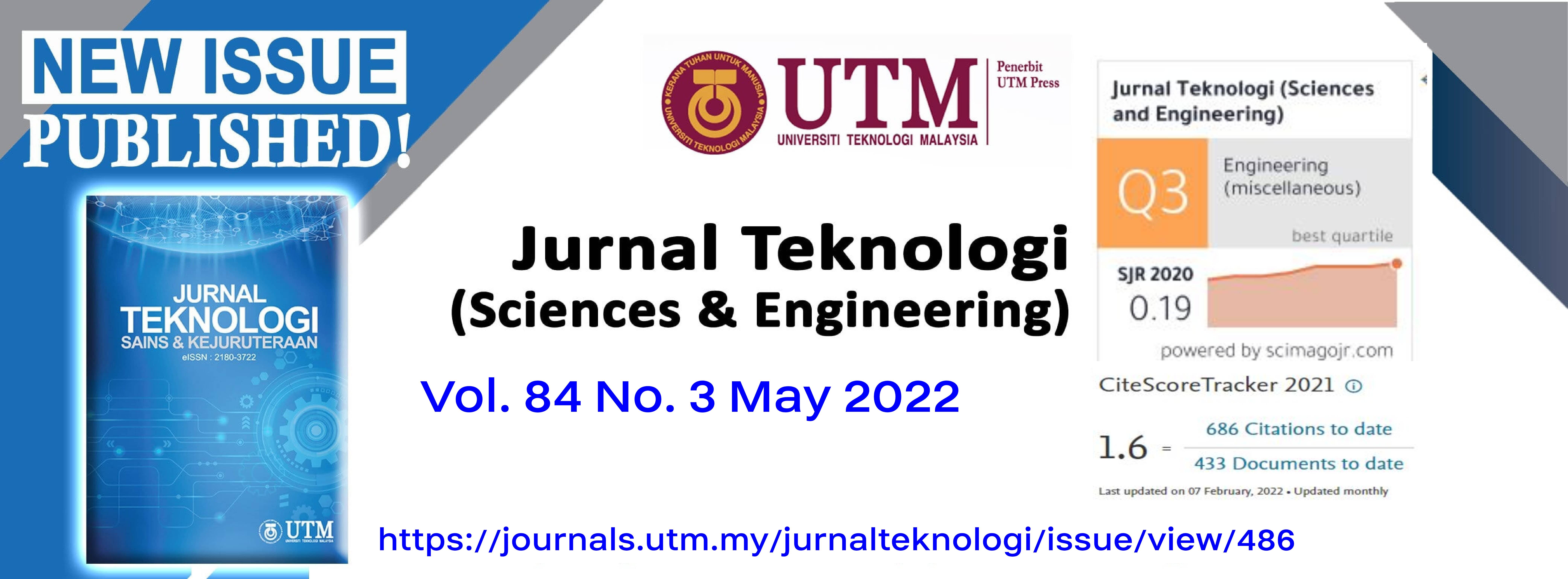VARIOUS REGULATIONS ON THE EXISTENCE OF N-TH ORDER LIMIT LANGUAGE
DOI:
https://doi.org/10.11113/jurnalteknologi.v84.17845Keywords:
DNA, formal language theory, splicing system, splicing language, n-th order limit languageAbstract
In molecular biology, recombinant Deoxyribonucleic acid technology has ignited an increase in the interest of new researches. Moreover, the splicing system has generated enthusiasm in developing computational models collaborating with formal language theory. Formal language theory tends to be a natural structure for formalising and investigating DNA computing models from this viewpoint. The work of several researchers who added control structures to the splicing formalism, thus creating universal computation systems, has provided additional inspiration for the study of splicing systems. A splicing system is a conventional model of a set of dsDNA that undergoes the cutting and pasting process with the presence of restriction enzyme and ligase. Previously, an introduction of the n-th order limit language is presented and discussed. The properties and the characteristics of the n-th order limit language are developed and also explained by using examples and sort into a few cases. However, the regulation of the existence of the n-th order limit language is left unintended. In this paper, the factors that restrict the formation of the n-th order limit language are discussed. Several restrictions applied are the length of the rules are not equal and same rules applies on several crossing sites of the initial strings. In addition, some examples are given to show the restriction of the formation of n-order limit language.
References
Alberts, B., Johnson, A., Lewis, J., Raff, M., Roberts, K. and Walter, P. 2015. Molecular Biology of the Cell. 6th ed. New York: W. W. Norton & Company.
DOI: https://doi.org/10.1016/b978-0-12-279202-1.x5002-7.
Watson, J. and Crick, F. 1953. Molecular Structure of Nucleic Acids: A Structure for Deoxyribose Nucleic Acid. Nature.171(4356): 737-738.
DOI: https://doi.org/10.1001/jama.269.15.1966.
Head, T. 1987. Formal Language Theory and DNA: An Analysis of the Generative Capacity of Specific Recombinant Behaviors. Bulletin of Mathematical Biology. 49(6): 737-59.
DOI: https://doi.org/10.1016/s0092-8240(87)90018-8.
Head, T. 1998. Splicing Representations of Strictly Locally Testable Languages. Discrete Applied Mathematics. 87(1-3): 139-47.
DOI: https://doi.org/10.1016/s0166-218x(98)00053-5.
Head, T. 2000. Splicing Languages Generated with One Sided Context. Biosystems. 57(2): 87-93.
DOI: https://doi.org/10.1016/s0303-2647(00)00091-5.
Goode, E. 1999. DNA Based Computers III. USA: American Mathematical Society, Wet Splicing System.
DOI: https://doi.org/10.1090/dimacs/048
Paun, G. 1996. On the Splicing Operation. Discrete Applied Mathematics. 70(1): 57-79.
DOI: https://doi.org/10.1016/0166-218x(96)00101-1.
Pixton, D. 1996. Regularity of Splicing Languages. Discrete Applied Mathematics. 69(1-2): 101-12.
DOI: https://doi.org/10.1016/0166-218x(95)00079-7.
Goode, E. 2004. Aspects of Molecular Computing. New York: Springer-Verlag, Splicing to the Limit.
DOI: https://doi.org/10.1007/978-3-540-24635-0_13.
Yusof, Y. 2012. DNA Splicing System Inspired by Bio Molecular Operation. Universiti Teknologi Malaysia.
Yusof, Y., Sarmin, N. H., Goode, T. E., Mahmud, M., Heng, F. W. 2012. Hierarchy of Certain Types of DNA Splicing Systems. International Journal of Modern Physics: Conference Series 2012. 271-277.
DOI: https://doi.org/10.1142/s2010194512005314.
Mudaber, M. H., Yusof, Y., and Mohamad, M. S. 2017. Differentiating the Persistency and Permanency of Some Two Stages DNA Splicing Language via Yusof-Goode (YG) Approach. 1st International Conferences on Applied & Industrial Math and Statistics 2017. 1-10.
DOI: https://doi.org/10.1088/1742-6596/890/1/012081.
Goode, E., & DeLorbe, W. 2007. DNA Splicing Systems. International Workshop on DNA-Based Computers. 236-245.
DOI: https://doi.org/10.1007/978-3-540-77962-9_25.
Goode, E. 1999. Constants and Splicing Systems. State University of New York.
Ahmad, M. A., Fong, W. H., Yusof, Y. and Sarmin, N. H. 2014. An Extension of First Order Limit Language. AIP Conference Proceedings 2014. 627-631.
DOI: https://doi.org/10.1063/1.4882550
Khairuddin, S. H. M., Ahmad, M. A., Adzhar, N. 2020. Effect of m Number of Initial String on the n -th Order Limit Language. Technology Reports Kansai University. 62(7): 3681-3689.
Karimi, F. and Turaev, S. 2014. Fuzzy Splicing System. 6th International Conference, ICCCI 2014. 20-19.
DOI: http://dx.doi.org/10.1007/978-3-319-11289-3_3
Peter, L. An Introduction to Formal Languages and Automata. 6th ed. Massachusetts: Jones and Bartlett, LLC; 2016.
DOI: https://doi.org/10.1142/9789812817495_0002.
Ahmad, M. A. 2016. Second Order Limit Language and its Properties in Yusof-Goode Splicing System. Universiti Teknologi Malaysia.
Khairuddin, S. H. M., Ahmad, M.A. and Adzhar, N. In press. An Introduction to n-th Order Limit Language. Enginering Letter.
Downloads
Published
Issue
Section
License
Copyright of articles that appear in Jurnal Teknologi belongs exclusively to Penerbit Universiti Teknologi Malaysia (Penerbit UTM Press). This copyright covers the rights to reproduce the article, including reprints, electronic reproductions, or any other reproductions of similar nature.
















